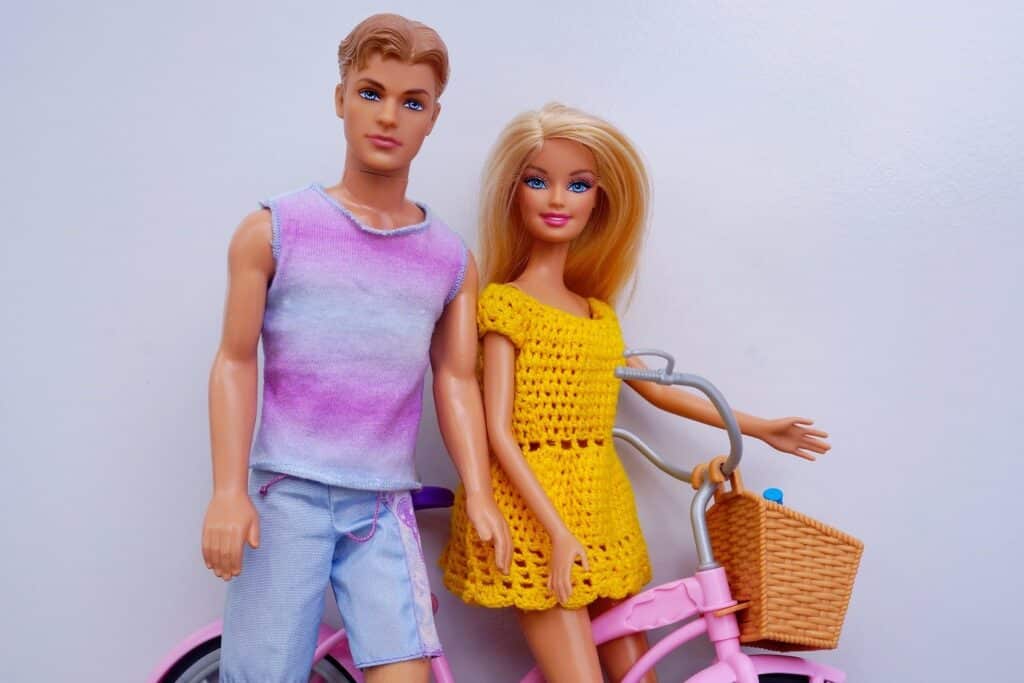The iconic Barbie is well-known for her diverse and extensive resume— she’s been a surgeon, a construction worker, a flight attendant and a coffee shop worker– but new data out of the UK has revealed her real-world gender pay gap, compared to her male counterpart Ken.
Over a lifetime of work, Barbie would earn £4 million (approximately $7.7 million AUD) less just for being a woman.
Ahead of the highly anticipated, live action Barbie movie, money.co.uk business bank account experts analysed Barbie’s professions with available data and the number of years worked in each role to calculate the earning disparity should Ken have the same resume.
In the UK, Barbie’s lifetime salary across the 59 roles with data available would total a whopping £45.4 million (£45,428,296), whereas Ken would earn over £4 million more (£49,554,215).
In one of the more shocking stats, data showed 90 per cent of Barbie’s jobs pay men more money for doing the same thing. And only 6 out of 59 (10 per cent) of roles analysed showed females to earn more than their male counterparts.
Each of the 59 occupations were analysed against 2022 median full time pay data from UK ONS and US Bureau of Labour Statistics and categorised each role against the occupation type available. Where data for a specific occupation wasn’t available, the median full-time pay for the group of occupations it belonged to was substituted.
To calculate the lifetime salary totals, the total number of years worked in each occupation was calculated from the year the doll was launched and the average 2022 salary for that occupation – no adjustment was made for real world average salary changes over that period.
Earnings for ‘Ken’ assumed he worked the same jobs for the same amount of time regardless of when or whether an equivalent doll was released.
The top pay disparity found was in the occupation of a judge. If Ken was a judge, he’d be paid 31 per cent more than Barbie, with men earning £19,470 on average more than females.
Following a judge, the top 5 Barbie occupations where males are paid more than females in the UK include flight attendant (232.93 per cent pay gap), park ranger (21.11 per cent pay gap), construction worker (20.01 per cent pay gap) and doctor (19.69 per cent pay gap).
Four out of five of Barbie’s highest paying roles sit within the STEM industry, with not a single one paying females more than males. These include surgeon (17.27 per cent pay gap), doctor (19.69 per cent pay gap), paramedic (15.32 per cent pay gap), judge (31.30 per cent pay gap) and robotics engineer (12.11 per cent pay gap).
Out of the lowest paying job positions, park ranger Barbie has the greatest difference, with men earning on average £4.7k (21.1 per cent) more than women in the same role. The following four occupations in this category include hair stylist (9.41 per cent pay gap), waitress (1.98 per cent pay gap), make-up artist (8.99 per cent pay gap) and cashier (8.83 per cent pay gap).
The occupation topping the charts where Barbie and females in the UK are paid more than males is a film director, with a 9.15 per cent pay gap in favour of women.
The other top occupations where females earn more than males are aerobics instructor (6.45 per cent pay gap), yoga teacher (6.45 per cent pay gap), wildlife conservationist (3.44 per cent pay gap) and coffee shop worker (2.58 per cent pay gap).
“Children’s career aspirations have long been defined by gender stereotypes,” said money.co.uk business bank account expert Lucinda O’Brien. “It’s therefore refreshing and positive to see Barbie working a whole variety of jobs (president being one of them!) in the latest live action Barbie movie.”
O’Brien notes that positive change can occur from girls watching Barbie in roles they might not otherwise have seen themselves working but says that “even with Barbie working across a wide variety of job sectors in recent years representing females in largely male dominated positions, women continue to be misrepresented in the working world.”
“Although there are current laws in place ensuring equal pay, the data still reveals men continue to be favoured in the workplace,” she said, adding that “more measurable steps need to be taken to re-address this balance.”


